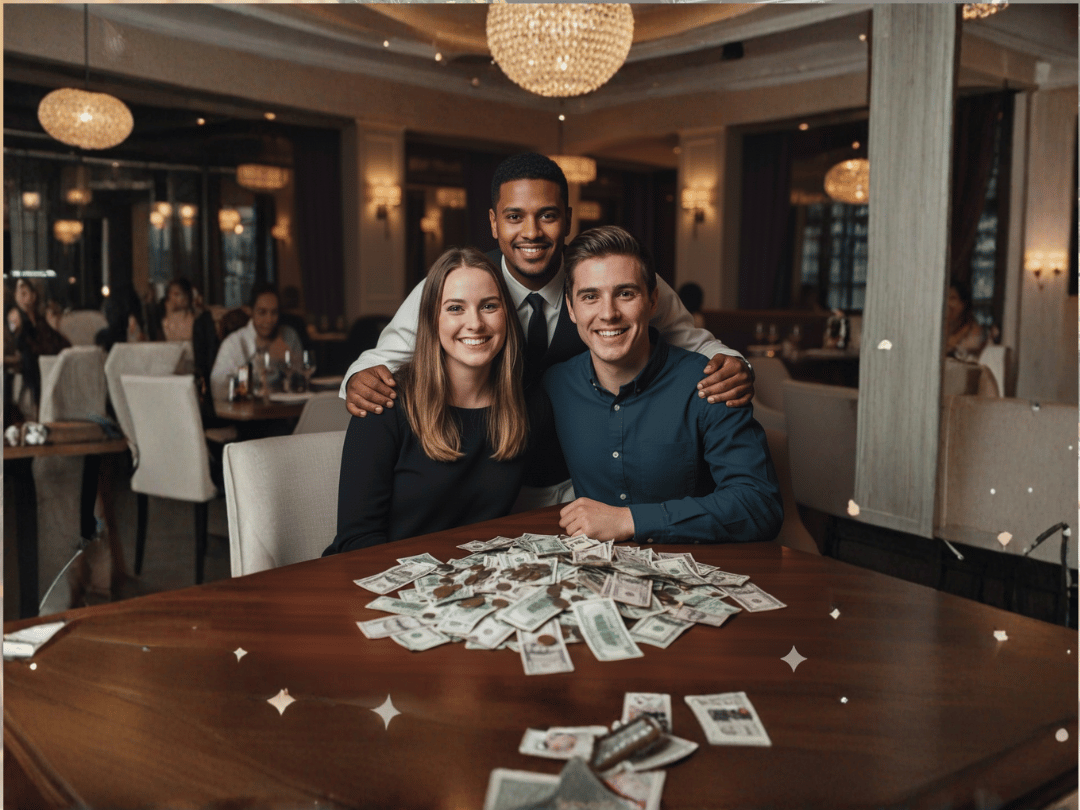Why do we have few or almost no tips?
Volodymyr Nosenko
November 12, 2025
How long to greet, when to consult, why 15-min bills kill tips, and how optional QR checkout shortens the last mile without hurting hospitality

Seat Buffers: How Many Minutes?
In restaurants, the distance between a warm hello and a graceful goodbye is measured in minutes. Get those minutes right, and almost everything else feels right, too.
The First Hello
You sit, take off a coat, glance at the room. In the best places, someone appears within a couple of minutes—not to sell, just to say you’ve been seen. A glass of water, a quick smile, the offer of a moment to settle in. It’s a tiny exchange that buys everyone time.
Push past five or six minutes and the mood tilts. The couple that arrived buoyant now looks at the door, then their phones. The feeling isn’t anger, it’s uncertainty. In hospitality, uncertainty is the draft under the door: you don’t always notice it, but it cools the room.
The fix isn’t complex. The opening line—“Would you like a quick tour of the menu, or a minute to decide?”—respects two truths at once: some guests come for guidance; others already know what they want. The right words compress the first buffer without rushing anyone.
The Quiet Middle
Once the first drinks land, the dining room finds a rhythm. A good service is a subtle negotiation of tempos—when to steer, when to step back. Some nights you’ll talk about oysters and provenance. Others you’ll simply ferry what was always going to be ordered.
What matters is how the room breathes: the way the plan on the screen matches the plan at the door; the way tables turn not as a target but as a consequence of meals that begin on time and end when guests are ready—no sooner, no later.
The Long Goodbye
Ask for the bill and the tone changes. The best restaurants honor that signal. A check appears within a few minutes, not like a curtain drop but like a hand extended. If you’ve eaten in Spain, you’ve likely felt the other version: a fifteen-minute drift in which a fine night goes slightly grey. No one meant to ignore you, systems simply failed to catch up with intention. By the time the terminal arrives, the tip—the most fragile part of the evening—has already shrunk.
There is an uncomplicated antidote: when a guest is ready to leave, let them leave. That might mean a classic close—the leather folder, the brief exchange—or it might mean something quieter.
The Case for QR (Used Like Good Manners)
QR payment at the table is not a manifesto against service. Done well, it is the absence of friction: the guest scans, sees the check, splits if needed, adds a tip if they wish, and pays. No raised hands, no “I’ll be right back,” no choreography of terminals in a crowded aisle. Ten minutes of drift becomes two minutes of certainty.
It has limits. In rooms built on ritual, offer it as an option, not a rule. Don’t push a gratuity screen like a tax. Keep the code obvious and reliable, then step back. QR isn’t hospitality, it protects hospitality, keeping staff with people rather than machines.
Where QR changes the texture of the night
Cafés shed micro-queues and give lone baristas their breath back.
Casual rooms avoid end-of-service pileups, so the last mile feels as light as the first.
Bars and tapas counters split checks without math contests.
Large, multi-area venues keep runners on service instead of hunting devices.
Modern fine dining keeps the ceremony intact—unless a guest quietly opts for speed.
Two Minutes Here, Two Minutes There
If you want a map, it can be brief:
Greet within two to three minutes. If you’re in the weeds, acknowledge in sixty seconds and return.
Offer guidance or give space—ask which. It’s the fastest way to be appropriate.
Present the check within three minutes of the request. The guest has already decided the night is over.
Finish payment within two minutes. With QR, it’s often ninety seconds—and invisible.
These aren’t laws; they’re bands. Every room, every city, every service has its own weather. But where operators hold to them, the temperature of the evening stays right.
Where the System Helps Without Getting in the Way
The right software can make those minutes easier to keep—and then disappear. In platforms like Reservble, guests can choose a seat or area when they book, so the conversation at the door starts on the right foot. Day-before and same-day reminders steady arrivals without feeling insistent. And when the evening is over, QR at the table closes the check in a breath—digital receipt, optional tip—so staff stay with people, not terminals. The technology isn’t the story; the absence of friction is.
The Point
People don’t remember how many tables you turned. They remember a first moment that felt attentive and a last moment that respected their time. With tools such as Reservble—seat selection set before arrival, quiet reminders, and a checkout that happens when the guest is ready—you keep those two buffers where they belong: brief, human, and almost invisible.
Tags:
Categories: